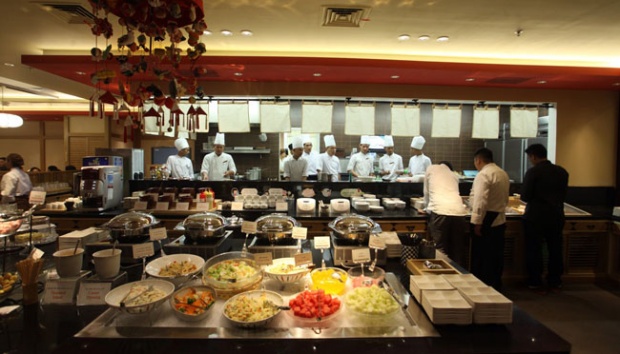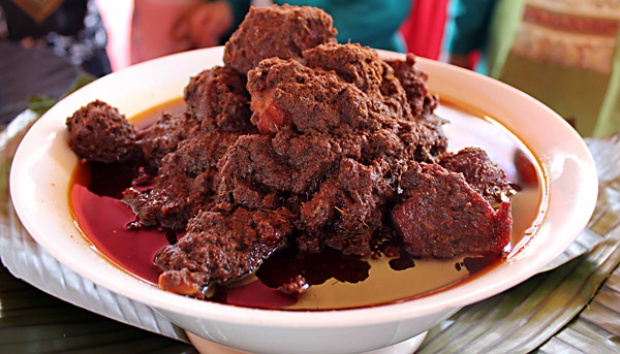
TEMPO.CO, Jakarta - Japanese are known to have passion on foods. Therefore it is easy to find restaurants on every corners of the street of Tokyo. The concept and menu offered by the restaurants are also variable starting from the traditional fast food to the made-by-order dishes. From those with long queue to those require an advance booking, and from the beef bowl-style restaurant to the classy restaurants offering Kaiseki style.
We are a group of journalist from South East Asia who visited Tokyo on our curiosity of Kaiseki style. Luckily, we were taken to a dinner at Kitaohji Akasaka Saryo restaurant situated in the Chiyoda-ku downtown, Tokyo, on the mid of November.
According to Hiroko Kaizuka, the Deputy Director of International Media division of the Japan Foreign Affair Ministry, who is also the one who invited us to the dinner, Kaiseki is a traditional dinner style of the noblemen in the past.
History says that Kaiseki has been known since the era of Kamamura (1185-1333). Initially, it was served in small portions for monks who underwent trainings. In the development, the dish was made for formal reception or banquet.
Entering the Muromachi Era (1336-1573), a dining culture called Honzen (Honzen no seishiki)and Kaiseki (Cha-Kaesaki) were developed. Both have now become mainstream dining cultures in Japan.
In Honzen culture, a one-man portion dish is served individually on a short-legged table called onzen. On the other hand, Kaiseki is served in small portion such as servings at the tea time.
Over time, Kaiseki style is shifting.
“Today, what is prominent in Kaiseki is the art, including flavor, texture, appearance and color,” said Hiroko.
During the occasion, Hiroko invited us to enjoy Kaiseki foods. We sat in circle around the square-shaped table, on thin mats called tatami.
“In Kaiseki dining style, please enjoy the 13 kinds of foods that will be served in front of you,” Hiroko said bringing surprised expression on our faces.
How were we supposed to finish 13 kinds of foods, while Japanese people do not appreciate guests who don not finish the served foods.
Not long after, the appetizers arrived consisting of six kinds of foods including boiled radishes leaves, swordfish slices grilled with onions, fish fin sushi, sake boiled oysters, crab soup, and Kyoto’s egg miso soup.
Before starting our battle with the food, Hiroko led us to do the itadakimasu ritual. Both hand palms are cupped in front of our chest like the gesture for paying obeisance.
“This is to show gratitude for the meals we are about to eat,” Hiroko explained.
Then we were having toast by shouting “Kanpai!” spreading excitements all over the room.
As mentioned by Hiroko, the appearance of the dishes were very attempting that we started to munch on them enthusiastically. The foods were finished in a flash of time since the portions are small.
The waitress dressed in kimono cleaned up the empty ceramic wares immediately and came back again not long after with the main servings.
The first main dish was the fresh sea foods called sashimi (tuna, pink shrimp, and Japanese sea bass). And then followed with grilled dishes (local chicken grilled with miso), and fried dish (shrimp tempura).
Next, it was foods served in small pots called the pot dish that consisted of Japanese radish and amberjack, plus monkfish liver with ponzu sauce (ankimo ponzu). The lastly-served main dish was rice cooked with salmon and cashew nut.
“Why does the heaviest dish come last?” we thought after we felt already bloated with the previous dishes.
Not all of us finished the rice. But when our stomachs full, the green tea ice cream was served as the dessert. In Japan, green tea is not only served as beverage. The ice cream was so refreshing.
While we enjoyed our ice cream, we counted how long time we have spent to have Kaiseki dinner. When we saw the clock showing 21.30, we realized that we have been there for 5 hours.
Dining in Kaiseki style is indeed need extra time. Therefore, restaurants in Japan that offer this style usually require booking in advance. Sometime the seats have to be secured days in advance.
When the ice cream has finished, it was the time to say goodbye. According to Hiroko, Japanese usually shouting chants before separating.
“If we heard a goodbye chant in a room, it means that they will be out of the room soon,” said Hiroko smiling.
And we did our goodbyes with Sayonara.
DA CANDRANINGRUM























